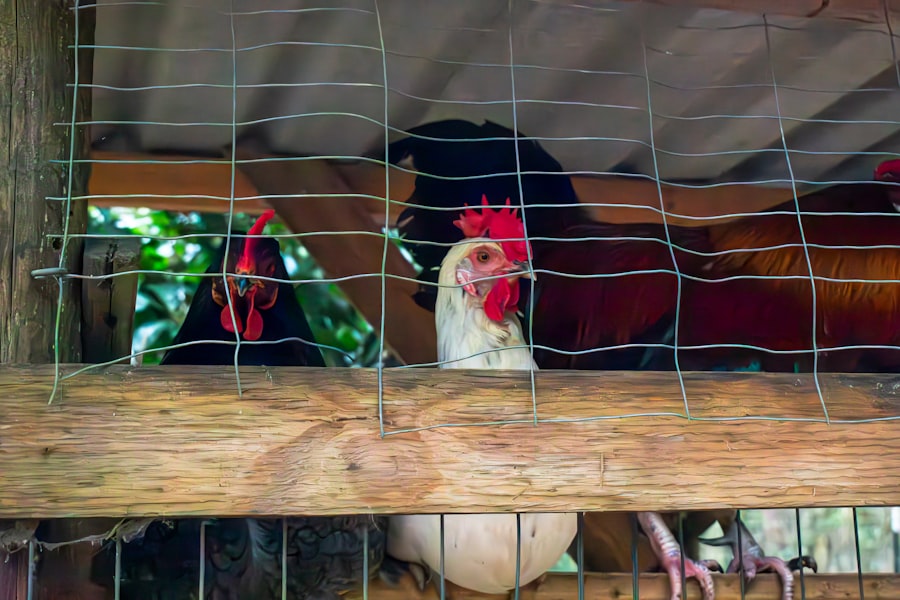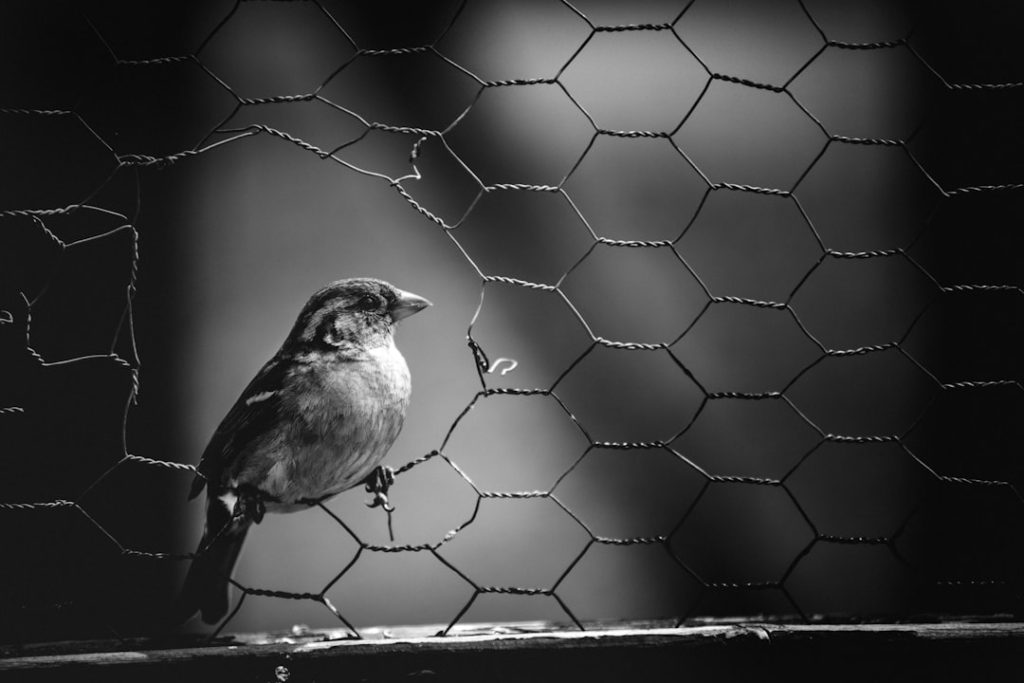Chickens are social creatures with a diverse range of behaviors, including foraging, dust bathing, and roosting. Understanding these behaviors is essential for effectively managing their interactions with structures. Chickens are natural foragers and will peck at various surfaces in search of food, which can potentially damage buildings if not properly managed.
Their curious nature leads them to explore their surroundings and investigate new objects, sometimes resulting in pecking at structures out of inquisitiveness. Chickens establish a social hierarchy within their flock, known as the pecking order. This hierarchy can influence their behavior towards structures, with dominant chickens potentially exhibiting more assertive behaviors, such as pecking at buildings to establish territory.
Understanding the dynamics of the chicken flock can provide valuable insights into their behaviors towards structures. By comprehending the natural behaviors and social dynamics of chickens, property owners can implement proactive measures to manage and mitigate potential issues related to chickens pecking at buildings. This knowledge allows for better anticipation and addressing of such behaviors, ensuring a harmonious coexistence between chickens and human-made structures.
Table of Contents
- 1 Creating a designated feeding area for chickens
- 2 Implementing deterrents to prevent chickens from pecking at the house
- 3 Providing sufficient enrichment and distractions for chickens
- 4 Regularly trimming and maintaining vegetation around the house
- 5 Supervising and training chickens to avoid the house
- 6 Seeking professional advice for persistent chicken behavior issues
- 7 FAQs
- 7.1 What are some common reasons why chickens might eat your house?
- 7.2 How can I prevent chickens from eating my house?
- 7.3 What are some safe and effective deterrents to keep chickens from eating my house?
- 7.4 Are there any specific materials or parts of the house that chickens are more likely to eat?
- 7.5 Is it harmful for chickens to eat materials from the house?
Key Takeaways
- Chickens are social animals and exhibit natural behaviors such as pecking, scratching, and exploring their environment.
- Designate a specific feeding area for chickens to reduce the likelihood of them pecking at the house.
- Implement deterrents such as reflective surfaces or physical barriers to prevent chickens from pecking at the house.
- Provide enrichment and distractions such as perches, dust baths, and toys to keep chickens mentally and physically stimulated.
- Regularly trim and maintain vegetation around the house to reduce the temptation for chickens to peck at it.
- Supervise and train chickens to avoid the house by using positive reinforcement and consistent training methods.
- Seek professional advice from a veterinarian or animal behaviorist if chicken behavior issues persist despite efforts to address them.
Creating a designated feeding area for chickens
Redirecting Natural Foraging Behavior
One effective strategy for preventing chickens from pecking at the house is to create a designated feeding area for them. By providing a specific location for feeding, homeowners can help redirect the chickens’ natural foraging behavior away from the house. This designated feeding area can be set up with feeders and waterers to ensure that the chickens have easy access to food and water without needing to peck at the house.
Encouraging Natural Foraging Behaviors
Additionally, incorporating natural elements such as rocks or logs into the feeding area can encourage chickens to engage in more natural foraging behaviors, further reducing their inclination to peck at the house.
Using Mobile Chicken Coops or Tractors
Another approach to creating a designated feeding area is to use mobile chicken coops or tractors. These structures can be moved around the property, allowing chickens access to fresh foraging areas while keeping them away from the house. By regularly rotating the location of the chicken coop, homeowners can help prevent chickens from developing a habit of pecking at a specific area of the house.
Effective Management of Foraging Behavior
Overall, creating a designated feeding area for chickens is an effective way to manage their foraging behavior and reduce the likelihood of them pecking at the house.
Implementing deterrents to prevent chickens from pecking at the house

In addition to creating a designated feeding area, implementing deterrents can also help prevent chickens from pecking at the house. There are various deterrent options available, ranging from physical barriers to natural repellents. One common physical deterrent is the installation of wire mesh or fencing around areas of the house where chickens tend to peck.
This barrier can effectively block access to these areas, discouraging chickens from pecking at the house. Additionally, using visual deterrents such as scarecrows or reflective objects near the house can help deter chickens by creating a sense of unease or confusion. Natural repellents, such as citrus sprays or spicy solutions, can also be effective in deterring chickens from pecking at the house.
These scents and tastes are unpleasant to chickens and can help discourage them from approaching or pecking at the house. It’s important to regularly reapply these repellents to maintain their effectiveness. By implementing a combination of physical barriers and natural repellents, homeowners can effectively deter chickens from pecking at the house and redirect their behavior towards more appropriate areas.
Providing sufficient enrichment and distractions for chickens
Another important aspect of managing chicken behavior around the house is to provide sufficient enrichment and distractions for them. Chickens are intelligent animals that require mental stimulation and physical activity to thrive. Without proper enrichment, chickens may become bored and resort to undesirable behaviors such as pecking at the house.
To prevent this, homeowners can provide various enrichment activities for their chickens, such as hanging treats or toys in their coop or yard. These activities can help keep chickens engaged and occupied, reducing their inclination to peck at the house out of boredom. Furthermore, incorporating natural elements into the chicken’s environment, such as logs, branches, or dust bathing areas, can provide additional enrichment and distractions.
These natural elements allow chickens to engage in instinctive behaviors like scratching, perching, and dust bathing, which can help fulfill their natural behavioral needs and reduce their focus on pecking at the house. By providing sufficient enrichment and distractions for chickens, homeowners can help promote positive behaviors and reduce the likelihood of them pecking at the house.
Regularly trimming and maintaining vegetation around the house
The vegetation surrounding the house can also play a significant role in managing chicken behavior. Overgrown plants and shrubs near the house can provide hiding spots and cover for chickens, making it easier for them to approach and peck at the house unnoticed. To address this issue, homeowners should regularly trim and maintain vegetation around the house to reduce potential hiding spots for chickens.
By keeping the area around the house clear and open, homeowners can make it more difficult for chickens to approach and peck at the house. In addition to trimming vegetation, homeowners can also consider using landscaping techniques that deter chickens from approaching the house. For example, incorporating prickly or thorny plants near the house can create a natural barrier that discourages chickens from getting too close.
Similarly, using mulch or gravel around the perimeter of the house can make it less appealing for chickens to approach and peck at the structure. By regularly trimming and maintaining vegetation around the house, as well as using strategic landscaping techniques, homeowners can effectively manage chicken behavior and reduce the likelihood of them pecking at the house.
Supervising and training chickens to avoid the house

Monitoring and Redirecting
Supervising and training chickens can be an effective way to manage their behavior around the house. By actively monitoring their interactions with the house and intervening when necessary, homeowners can help discourage undesirable behaviors such as pecking. For example, if a homeowner observes a chicken approaching the house with intent to peck, they can use verbal cues or gentle redirection to guide the chicken away from the structure.
Reinforcing Boundaries and Expectations
Consistent supervision and gentle training can help reinforce boundaries and expectations for chicken behavior around the house. Additionally, positive reinforcement training techniques can be used to encourage desirable behaviors and discourage pecking at the house. For example, providing treats or rewards when chickens exhibit appropriate behavior away from the house can help reinforce these positive actions.
Shaping Chicken Behavior
Over time, this positive reinforcement can help shape chicken behavior and reduce their inclination to peck at the house. By supervising and training chickens in a gentle and consistent manner, homeowners can effectively manage their behavior around the house and promote more desirable interactions.
Seeking professional advice for persistent chicken behavior issues
In some cases, persistent chicken behavior issues may require professional intervention. If homeowners have tried various strategies to manage chicken behavior around the house without success, it may be beneficial to seek advice from professionals with experience in poultry management or animal behavior. These professionals can provide valuable insights into potential underlying causes of the behavior and offer tailored solutions to address specific issues.
Professional advice may include recommendations for modifying the chicken’s environment, adjusting feeding and enrichment practices, or implementing specialized training techniques. Additionally, professionals may be able to identify any health or welfare concerns that could be contributing to undesirable behavior in chickens. By seeking professional advice for persistent chicken behavior issues, homeowners can gain access to specialized knowledge and support that can help effectively address and manage challenging behaviors.
In conclusion, understanding and managing chicken behavior around the house requires a multifaceted approach that incorporates knowledge of their natural behaviors, proactive strategies for prevention, and ongoing supervision and training. By creating designated feeding areas, implementing deterrents, providing enrichment and distractions, maintaining vegetation, supervising and training chickens, and seeking professional advice when needed, homeowners can effectively manage chicken behavior around the house and promote positive interactions with these fascinating animals.
If you’re looking for tips on how to keep chickens from eating your house, you might also be interested in learning about the importance of the size of a chicken coop. Hannah Montana Chicken Coop offers valuable insights into the ideal coop size for your chickens’ comfort and well-being. Check out their article here.
FAQs
What are some common reasons why chickens might eat your house?
Chickens might eat your house due to boredom, lack of proper nutrition, or seeking out minerals and nutrients found in the materials of your house.
How can I prevent chickens from eating my house?
You can prevent chickens from eating your house by providing them with a balanced diet, ensuring they have access to proper nutrition and minerals, providing them with enough space and activities to prevent boredom, and using deterrents such as bitter sprays or physical barriers.
What are some safe and effective deterrents to keep chickens from eating my house?
Safe and effective deterrents to keep chickens from eating your house include bitter sprays, physical barriers such as wire mesh or fencing, and providing alternative materials for them to peck at such as mineral blocks or hanging treats.
Are there any specific materials or parts of the house that chickens are more likely to eat?
Chickens are more likely to peck and eat materials such as wood, foam insulation, caulking, and paint. They may also be attracted to shiny or reflective surfaces.
Is it harmful for chickens to eat materials from the house?
Yes, it can be harmful for chickens to eat materials from the house, as some materials may be toxic or cause digestive issues. It’s important to prevent chickens from ingesting non-edible materials.
Meet Walter, the feathered-friend fanatic of Florida! Nestled in the sunshine state, Walter struts through life with his feathered companions, clucking his way to happiness. With a coop that’s fancier than a five-star hotel, he’s the Don Juan of the chicken world. When he’s not teaching his hens to do the cha-cha, you’ll find him in a heated debate with his prized rooster, Sir Clucks-a-Lot. Walter’s poultry passion is no yolk; he’s the sunny-side-up guy you never knew you needed in your flock of friends!







